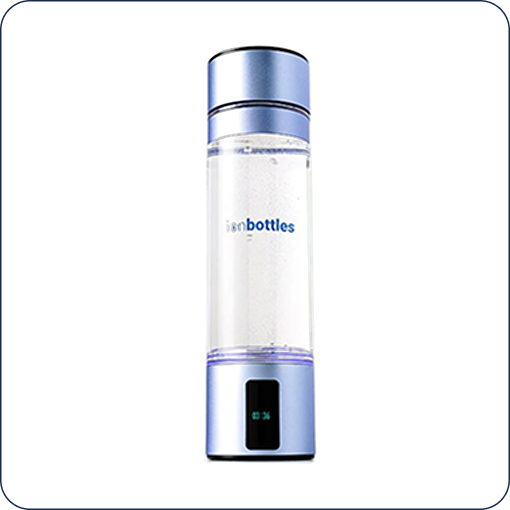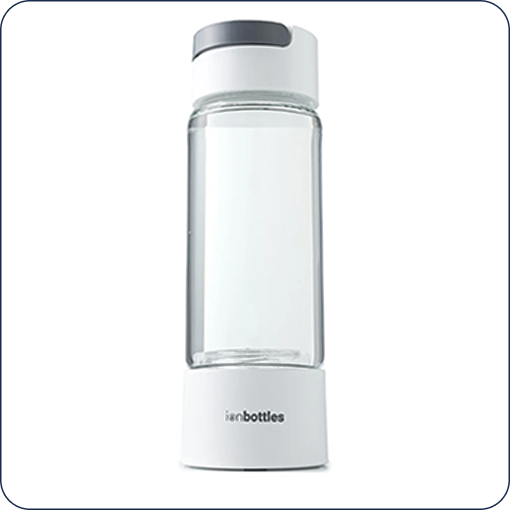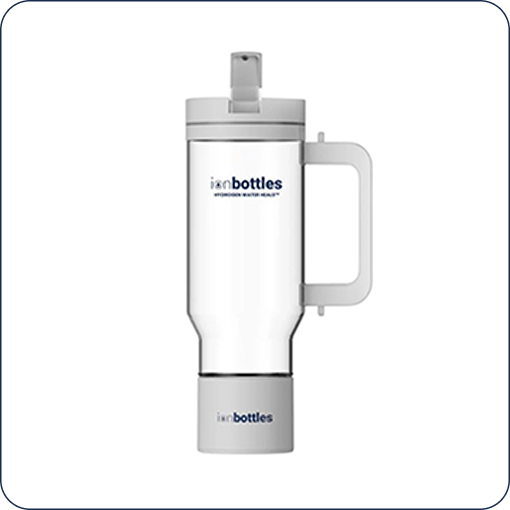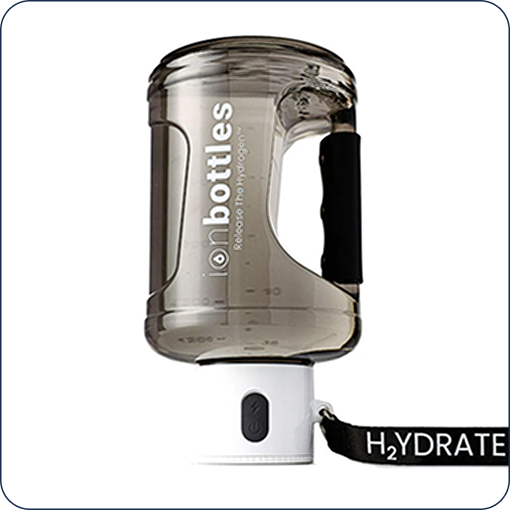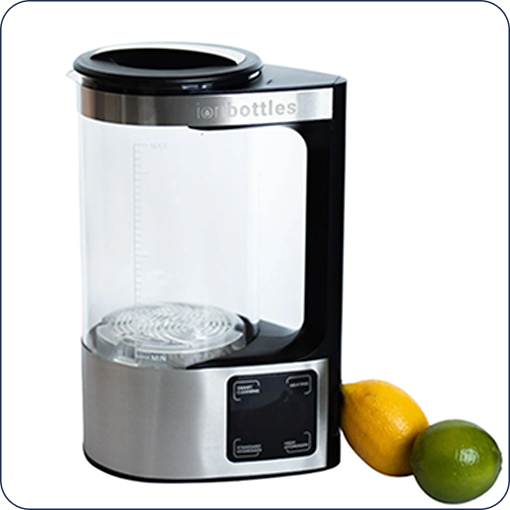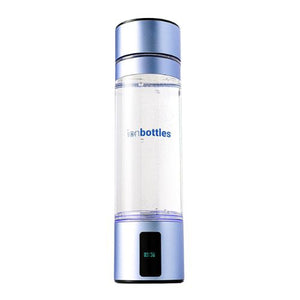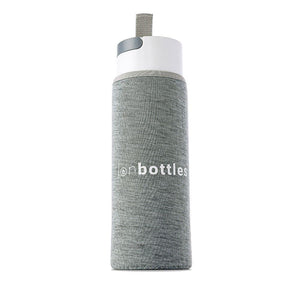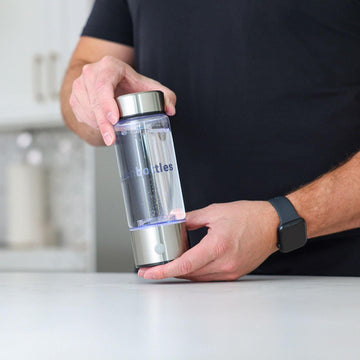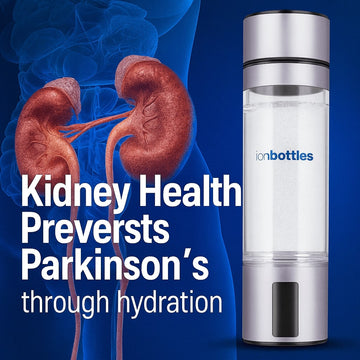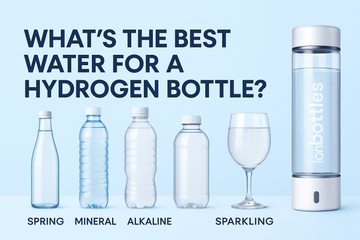Hydrogen water bottles have gained popularity for their health benefits, including increased hydration, antioxidant properties, and improved energy levels. These bottles infuse regular water with hydrogen gas, creating a refreshing and potentially beneficial beverage.
Like any specialized equipment, proper maintenance is crucial for hygiene, safety, and the longevity of your hydrogen water bottle. This guide will outline essential cleaning routines, safety tips, and storage practices to help you maintain your bottle effectively.
1. Daily Cleaning Routine
-
Hand Washing:
Begin your daily cleaning by hand washing the bottle and cap with warm water and a mild dish soap. It’s essential to avoid washing the generator, as this component should remain dry to ensure it can effectively produce hydrogen.
-
Wiping the Exterior:
Next, use a damp towel to gently wipe down the exterior of the bottle. This simple step removes smudges and fingerprints, keeping your bottle looking fresh and clean.
-
Electrolysis Chamber Care:
Pay special attention to the electrolysis chamber, where hydrogen is generated. Use a soft bottle brush or sponge to clean this area thoroughly. This ensures no residue builds up, which could interfere with the hydrogen generation process.
-
Avoiding Dishwashers:
Avoid using a dishwasher for cleaning, as the high heat and harsh detergents can damage the bottle’s sensitive internal components, especially the generator. By committing to manual cleaning with warm water and mild soap, you can keep your hydrogen water bottle functional and capable of delivering high-quality hydrogen-rich water.
2. Periodic Deep Cleaning
-
Frequency:
Aim to deep clean your hydrogen water bottle at least once a week, or more frequently if you use it heavily. This practice will help maintain optimal hygiene and performance.
-
Vinegar Solution:
To create a safe cleaning solution, mix equal parts vinegar and water. Vinegar serves as a natural disinfectant and is effective at cleaning without damaging your bottle’s components.
-
Soaking Process:
Disassemble the bottle into its individual parts—cap, generator, and electrolysis chamber—and soak them in the vinegar solution for 30 minutes to 1 hour. This process helps eliminate any mineral buildup or residue that may accumulate over time.
-
Rinsing and Drying:
After soaking, rinse all components thoroughly with clean water to remove any vinegar traces. Allow all parts to dry completely before reassembling to prevent moisture from affecting the internal generator and other sensitive parts. By adhering to this deep cleaning routine, you can keep your hydrogen water bottle in excellent condition and ensure it continues to provide high-quality hydrogen-rich water.
3. Important Safety and Usage Notes
-
Approved Water Types:
Only use distilled or purified water in your hydrogen water bottle. Tap water may contain impurities that can disrupt the hydrogen generation process and impact water quality.
-
Avoiding Non-Water Beverages:
Avoid using hot water, tea, sugary drinks, or carbonated beverages in your hydrogen water bottle. These liquids can damage internal components and interfere with hydrogen production.
-
Charging Protocol:
Always use the specified charging cable and adapter that came with your bottle. Avoid using speed chargers, as they may be incompatible and could damage your unit.
-
Seal Checks:
Regularly inspect the seals, especially around the electrolysis chamber, for any signs of wear or damage. Compromised seals can lead to leaks or malfunction.
-
Proper Storage:
Store your hydrogen water bottle in a cool, dry place away from direct sunlight. To keep the membrane wet and prevent it from drying out, ensure you use the silicone plug when the bottle is not in use. By following these safety and usage tips, you can ensure your hydrogen water bottle functions optimally, providing safe, high-quality hydrogen-rich water.
4. Tips for Longevity
-
Avoiding Physical Damage:
Handle your hydrogen water bottle with care to prevent drops or impacts. Protecting sensitive internal components, like the generator and membrane, is crucial for longevity.
-
Preventing Overfilling:
Be mindful not to overfill the bottle, as excessive pressure can lead to leaks or damage. Always adhere to the recommended fill level indicated by the manufacturer.
-
Manufacturer Instructions:
Always refer to the specific maintenance guide provided by the manufacturer for tailored instructions for your model. Following these guidelines will help keep your hydrogen water bottle in optimal condition for years to come.
5. Storage Tips for Hydrogen Water
-
Optimal Storage Materials:
When storing hydrogen water, choose aluminum or glass containers to prevent hydrogen leakage. These materials provide a superior barrier compared to plastic, which is porous and allows for hydrogen to escape.
-
Shelf Life of Sealed Bottles:
Hermetically sealed bottles or pouches can be stored for years without significant hydrogen loss, making them ideal for long-term storage.
-
Best Practices After Opening:
Once you open a bottle or pouch of hydrogen water, it’s important to consume it relatively quickly. Hydrogen is highly volatile, and exposure to air will cause it to dissipate. It’s best to drink the water within a few hours of opening the container to enjoy its full health benefits. Storing the water in a cool, dark place after opening can help preserve its hydrogen content, but freshness is key to maximizing its therapeutic properties.
Conclusion
Maintaining a hydrogen water bottle involves a combination of daily and periodic cleaning practices, adhering to safety guidelines, and following proper storage techniques. By regularly cleaning your bottle and paying attention to its components, you ensure that it remains hygienic and functional. Always follow the manufacturer's instructions for the best results. By taking these steps, you can enjoy the benefits of hydrogen-rich water while extending the life of your bottle.
